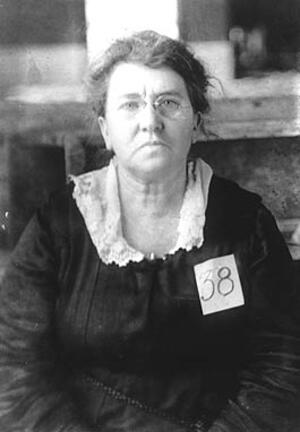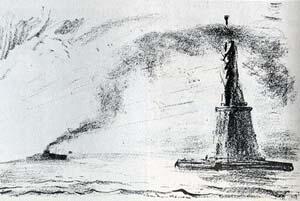Deportation
For Goldman, the ideal represented by the Statue of Liberty remained constant. Likewise, her love for America persisted, even as she protested an American government that sought to stifle dissenting voices and impose one set of moral and political standards upon its diverse population. The "100% Americanism" of the World War I era seemed to undermine the promise, offered to the "huddled masses" of Lazarus' poem, that in America they would be able to "breathe free."
Goldman's prison term for opposing the draft lasted two years. Upon her release in 1919, she was stripped of her citizenship and deported to Russia as an alien anarchist along with 248 others. In her memoir, Goldman recalled her last glimpse of America as the USS Buford bore its outcast passengers out of New York harbor. In this recollection, the appearance of the Statue of Liberty provides a telling reproach to American ideals, as Emma Lazarus' "Mother of Exiles" was forced to preside over this betrayal of the very liberty and hope she was meant to embody.




